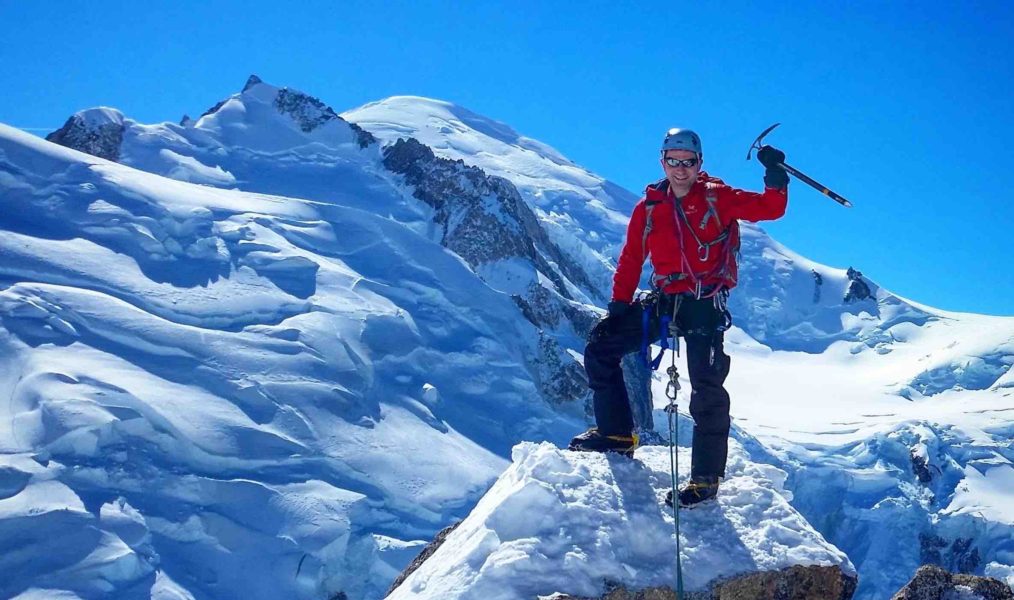It’s been nice the past few weeks in the Alps: driving without thinking the road will be blocked by a landslide; sleeping without worrying the chalet will be hit by an avalanche; skiing without fretting about a 4/5 avalanche risk; ice climbing without being concerned about the freezing levels. It’s been very cold in the Alps, and without new snow, cold means boring. After the past few weeks of stressing about ‘snowmageddon’, boring is most definitely good. Roll on more boring!
After the huge snowfalls around the time of Storm Eleanor, and all the damage which that brought, the conditions in the mountains stabilised remarkably quickly. Within days the ski areas opened right up, apart from those where the storm had caused mechanical damage to the lifts, and the temperatures plummeted. This was good for two technical reasons: firstly it heralds a period of high pressure and a sinking air mass which meant no more fresh snow coming in; and secondly, it helped accelerate the transportation of the snowpack with meltwater being frozen in place and bonding it together better. Better than these reasons, was the net effect: loads of powder to ski; plenty of ice to climb; sunny days to enjoy it all in. What wasn’t to like?
So, the past few weeks have been busy, and we’ve been spoilt for choice. The ice climbing in the Val de Cogne has been in exceptional condition, and the damage caused by the warmer weather, has been repaired with the good re-freezes. Even lower classic routes, like the Cascade Lillaz, have come into epic condition. The ice climbers who lurked indoors during the storms, sharpening their ice tools and screws, have emerged in abundance, but there are so many routes to choose from that they have been absorbed without too much crowding on the routes.
Back in the Mont Blanc massif it has been slightly warmer, which has favoured the skiers, as it has slightly delayed the formation of too deep a layer of hoar frost on the snow surface. Off-piste on the Vallée Blanche, Argentiere basin, Aiguilles Rouges and Le Tour, has been great. Recently the snow has become slightly chalky, but there are many champs powder stashes in the north aspect bowls. Ski tourers probing the quieter nooks and crannies of the Aiguilles Rouges, have been well rewarded for their efforts. It’s been a case of ‘earning your turns’, and Chamonix is a resort that gets skied out after fresh snow far quicker than many others.
Mountaineers have been in action on lift-accessed classics, such as the Arête des Cosmiques, as the wind has cleared some of the fresh snow. It’s been physically tough going on many routes, due to the snow depth, and snowshoes have often been used to access the ridge lines. The top lift of the Grandes Montets being closed has ruled out ascents of the Petite Aiguille Verte for all apart from those happy to skin up from the mid station, so the Aiguille du Midi and its satellite peaks and ridges have seen most of the action.
Cross country skiing has been good in Chamonix, with the pistes in the best condition, and deepest snow pack that they have seen for years. Across the massif in the Italian Val Ferret, the conditions are generally better, but this year there’s no need to traverse the tunnel for a good day on the ski de fond trails. On the other hand, if you are an aficionado of good coffee, or hot chocolate so rich and thick that you can eat it with a spoon, then definitely head across to the Val d’Aosta for the day!
If that’s not going to provide enough of an aerobic test for you, there have been plenty of trail runners out on the paths that are oft-frequented by snowshoers. Lower down, below 1800m on south-facing slopes, trail shoes have been equally effective as snowshoes, due to the well consolidated snow. I’ve enjoyed a couple of great days out winter running above Lac Vert and Ayeres above Servoz, and to the Chalets de Loriaz above Vallorcine. There’s also plenty of good winter running trails in the Chamonix valley around Le Bois, for those who don’t want to venture too high, or are shorter of time, perhaps squeezing in a quick training run whilst on a ski holiday.
For those of you who haven’t run on snow before, normal trail running shoes are fine. A top tip for those wanting more grip, is to wear micro-spikes over them. Brands that are popular include Kahtoola, Camp and Nortec. If you are venturing higher, remember that a summer race vest might not suffice, and winter kit should be adapted to the conditions. Take a small down jacket in case you have to stop, decide if an avalanche transceiver and kit is sensible, and consider running with poles to give you better balance especially in deeper snow.
So how’s it looking for the days ahead? The forecasts indicate a minimum overnight low of -14C on Tuesday 13th night, followed by a balmy +3C overnight on Friday 16th, a massive difference of 17C warming in just three days. This heralds a week of unstable weather and new snowfalls, which is where the worried face returns, not because I don’t like fresh snow. I love it. But because of what it’s falling on top of. At the start of this blog I said that boring was good. The high pressure and its allied cold temperatures have generated a thick layer of surface hoar frost, and that’s the worry.
Why? You’ll recognise the hoar frost, as the type that sparkles and twinkles like a million diamonds on the surface of the snow. When you ski, you can see it’s leaf shapes crystals on the deck of your skis. Mountaineers will know the sensation and tinkling noise as they drag their feet through it. Runners will relish the explosion of crystals as they run effortlessly for it. Whatever the sport, we all know the characteristics of this type of snow. It is very light, very weakly bonded, and that’s precisely the problem. Fresh wetter snow will fall on top of this chronically weak layer, and any slabs that fracture above it, will slide on this unconsolidated layer.
The avalanche risk will rocket once more. So where does that mean you can go? Think where the frost grows most; the shadier slopes from NW through North to NE aspects, are the key areas where surface hoar is generated. Add in the predominant prevailing winds in Western Europe being from the W to SW, and you need to consider that E aspect slopes are also likely to contain wind blown surface hoar accumulations. On the days after the fresh snow, it’s probably going to be wisest to head to sunnier and windward aspects to stay safest.
Words of warning aside, this season hasn’t been without its challenges, but it’s shaping up to be an epic year, especially for those who practice multiple mountain sports. It’s great to be spoilt for choice, and we certainly are being this year. Enjoy the holiday season ahead, and have a safe and great time in the mountains!
 Kingsley Jones is an International Mountain Leader and co-owner of Icicle Mountaineering. He’s also an author of mountain running books including ‘Lake District Trail & Fell Running’ and ‘Chamonix Trail Running’. More info at www.kingsleyjones.com
Kingsley Jones is an International Mountain Leader and co-owner of Icicle Mountaineering. He’s also an author of mountain running books including ‘Lake District Trail & Fell Running’ and ‘Chamonix Trail Running’. More info at www.kingsleyjones.com






